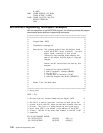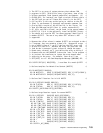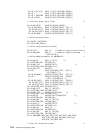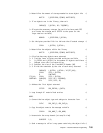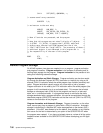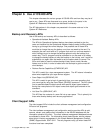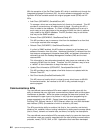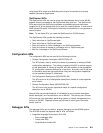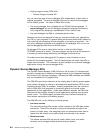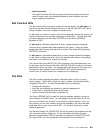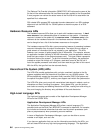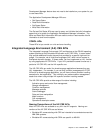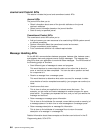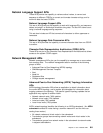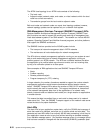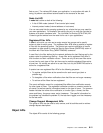Original program model (OPM) APIs
– Retrieve Program Variable API
You can use these sets of source debugger APIs independently of each other or
together as needed. The source debugger APIs can be used to write debuggers
for the AS/400 system. The users of these APIs include:
The source debugger that is shipped with the OS/400 licensed program. A
source debugger is a tool for debugging Integrated Language Environment
(ILE) programs by displaying a representation of their source code.
Any other debugger that IBM or a business partner writes.
Debugger functions are designed to help you write and maintain your applications.
You can run your programs in a special testing environment while closely observing
and controlling the processing of these programs in the testing environment. You
can write a debugger application that interacts with the debugger APIs, or you can
use the debugger provided with the AS/400 system.
All debugger APIs must be called within the job in which the Start Debug
(STRDBG) command is issued. The same program can be used at the same time
in another job without being affected by the debugger functions set up.
To enable source-level debugging of ILE programs, view information must be
stored with the compiled program. The ILE compilers use the create view APIs to
create view information. This information is then available to source-level debugger
applications through the source debugger APIs.
Dynamic Screen Manager APIs
The Dynamic Screen Manager (DSM) APIs are a set of screen I/O interfaces that
provide a dynamic way to create and manage screens for the Integrated Language
Environment (ILE) high-level languages. Because the DSM interfaces are bindable,
they are accessible to ILE programs only.
The DSM APIs provide an alternative to the existing way of defining screen appear-
ance outside a program by coding in data description specifications (DDS) or user
interface manager (UIM), for example. Instead, programmers can use a series of
calls to DSM within their programs to dynamically specify and control screen
appearance for their applications. Unlike static definition methods, the DSM inter-
faces provide the flexibility needed for those applications requiring more dynamic
screen control. The DSM support provided varies from low-level interfaces for
direct screen manipulation to windowing support.
The DSM APIs fall into the following functional groups:
Low-level services
The low-level services APIs provide a direct interface to the 5250 data stream
commands. These APIs are used to query and manipulate the state of the
screen; to create, query, and manipulate input and command buffers used to
interact with the screen; and to define fields and write data to the screen.
Window services
The window services APIs are used to create, delete, move, and resize
windows, and to manage multiple windows during a session.
8-4 System API Programming V4R1



